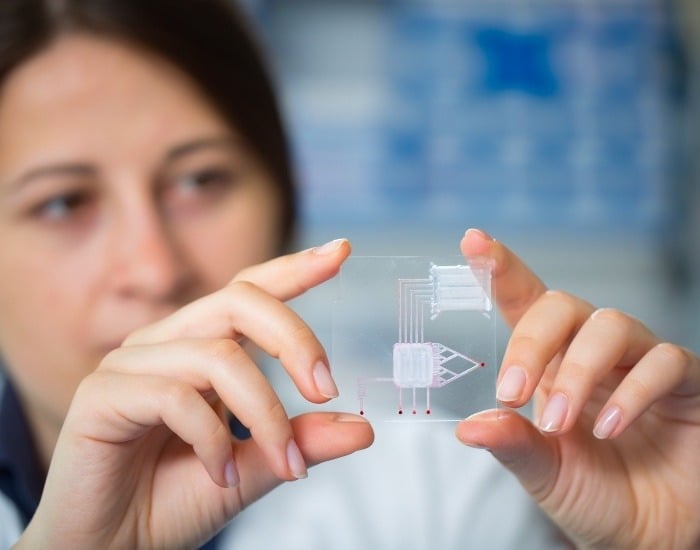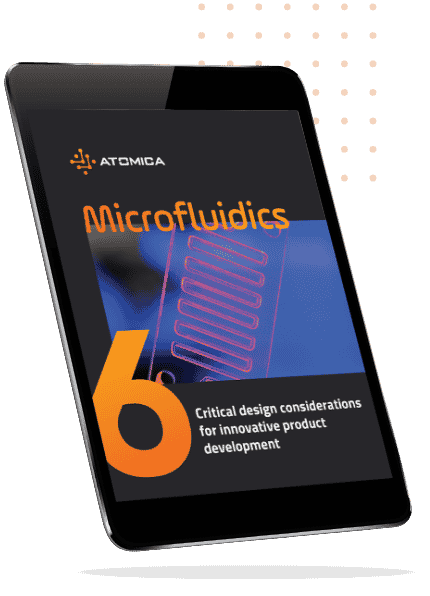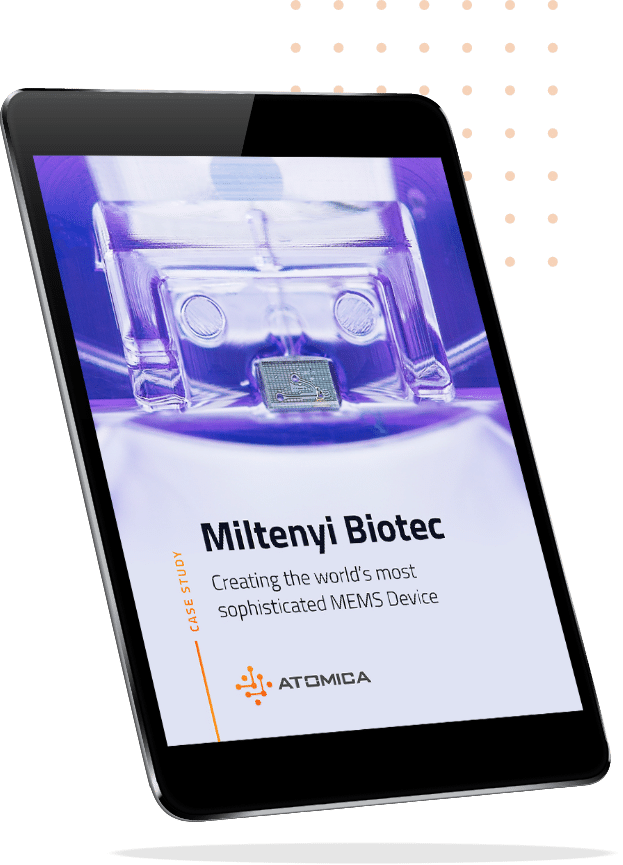Microfluidics: the Future of Medical Technology is Tiny

Learn the following in this post
- Discover a staggeringly small world
- What are microfluidics?
- What are microfluidic applications?
- How Atomica can help with your biochip

What do drug discovery and delivery, the fight against COVID-19, and personalized “organs” all have in common? They need to move—and then analyze—tiny amounts of precious sample. While that sounds like a daunting task, dramatic progress in these fields (and many others) is being driven by the power of the small. The very small.
The staggeringly small world
In 1959, celebrity physicist Richard Feynman memorably spoke about the “staggeringly small world” that was waiting for chemists, biologists, engineers, and physicists to explore. This spark, combined with roots in the microelectronics industry, led to the field of microfluidics, which began harnessing the unusual behaviors of fluid at the micro (10-6 m) and nano (10-9 m) scales in the 1970s. At the end of that decade, the first wafer-sized integrated gas chromatograph pioneered by Stephen Terry at Stanford University showcased the power of miniaturization for creating a “laboratory on a chip”. Microfluidics research exploded in the 1990s, delivering new and increasingly sophisticated commercial products from the late 1990s onward.
What are microfluidics?
By concentrating on very small length scales, microfluidics takes advantage of several compelling technological benefits. Got time for just a few? Microscale chemistry leads to lower sample and reagent costs, better sensitivity, and faster operations—all while using less of your precious sample. Automating and integrating multiple operation steps means simpler workflows, more consistent results, less operator effort, and sample-to-answer in a single product. Microscale components such as sensors, actuators, pumps, and more lead to longer battery life and much better precision and reliability than traditional instruments.
Put these advantages together in a range of materials, and you can get smaller, faster, cheaper, and more sensitive products—plus hand-held devices that may even do things your benchtop equipment simply can’t.
What are microfluidic applications?
Today, researchers, innovators, and companies are continuing to build on Feynman’s vision of “small but moveable machines” to enable a rich assortment of microfluidics-based applications, particularly biomedical applications. From DNA sequencing to cell sorting to molecular diagnostics, microfluidics is a cornerstone technology for today’s innovations in medicine, agriculture, environmental mediation, and other crucial challenges.

Excitingly, microfluidics is poised to drive tomorrow’s breakthroughs as well. Clean energy, safe food, personalized medicine … microfluidics will be enriching our daily lives in ever more impactful ways. Even space and planetary exploration stand to benefit from microfluidics!
Should you be considering microfluidics for your next development challenge? The answer is yes if you’re handling expensive and limited samples that need protection—especially if your innovation needs to be out in the world. From the body, to the home, to the field, to the point of care, to resource-poor settings, microfluidics can put the future in your hands.
How Atomica can help with your biochip
Here at Atomica, we’ve spent 20 years creatively integrating microfluidics, optics, and sensors to address a variety of exciting applications for our clients. We’ve done deep thinking about six critical design considerations for microfluidics: on-chip operations, design approach, materials requirements, integration, price point, and manufacturability. Keep an eye on this blog—we’ll be sharing some of our insights here.
Helping you craft an extraordinary solution for tomorrow. At Atomica, that’s what gets us excited.





